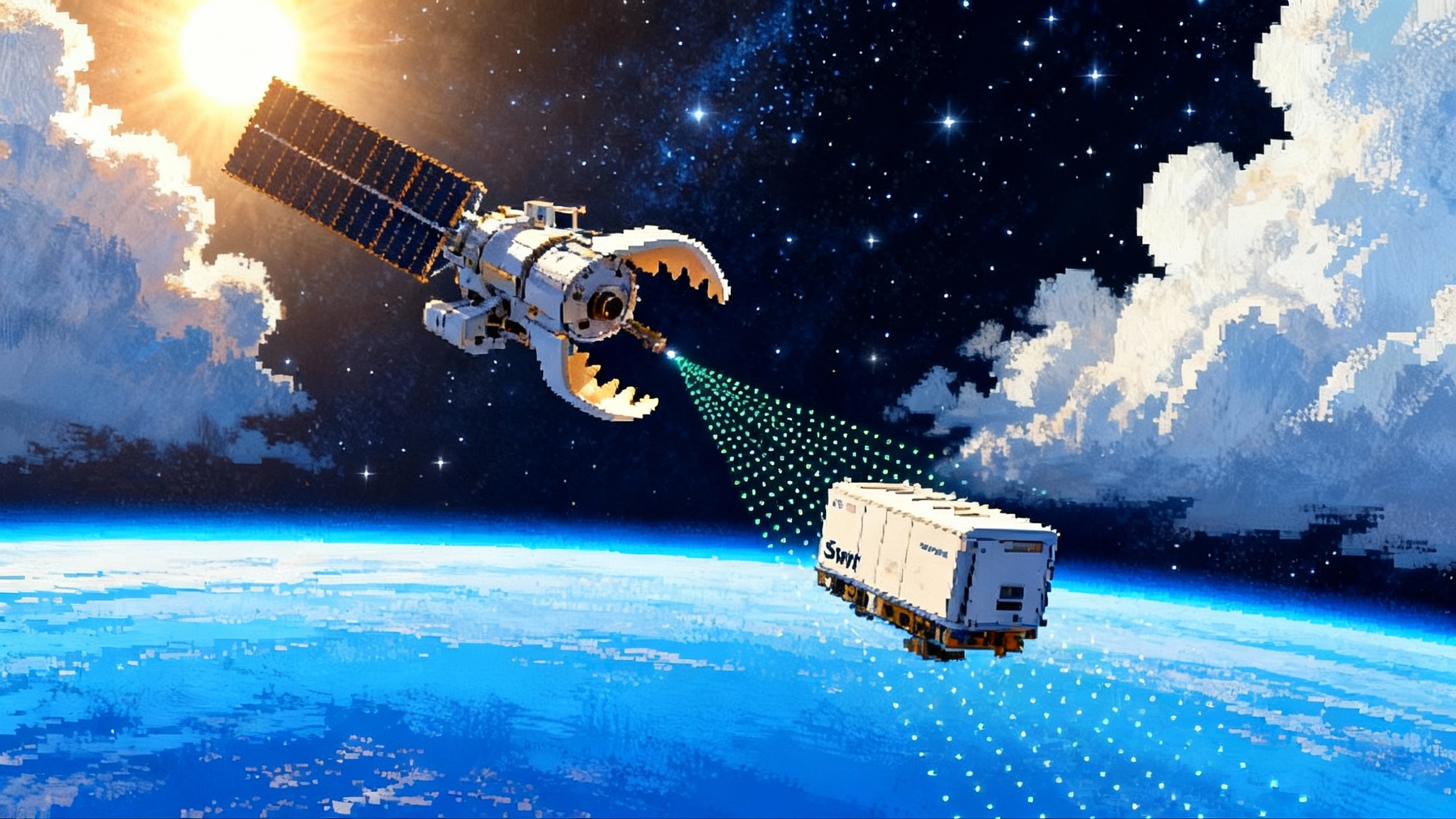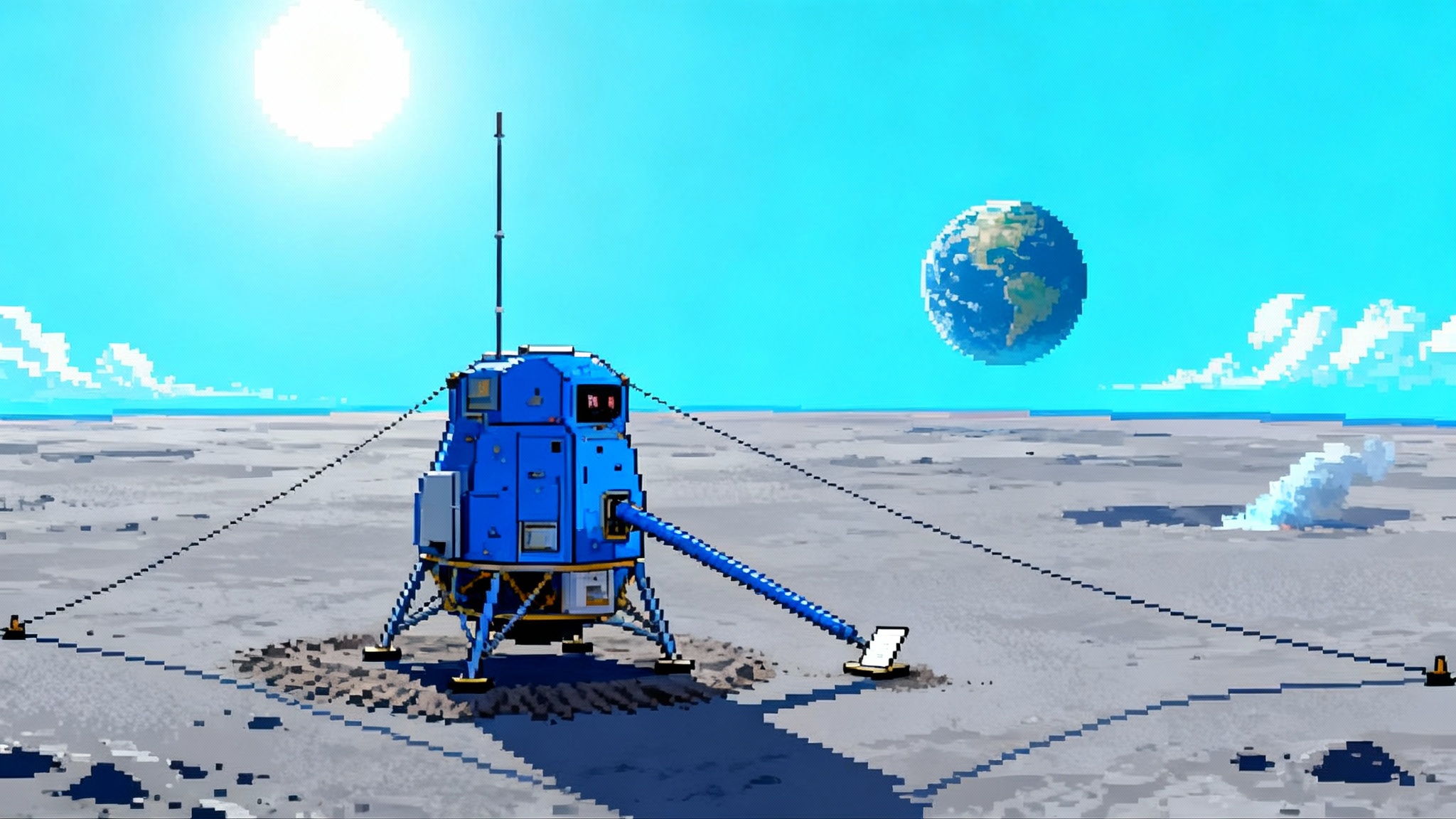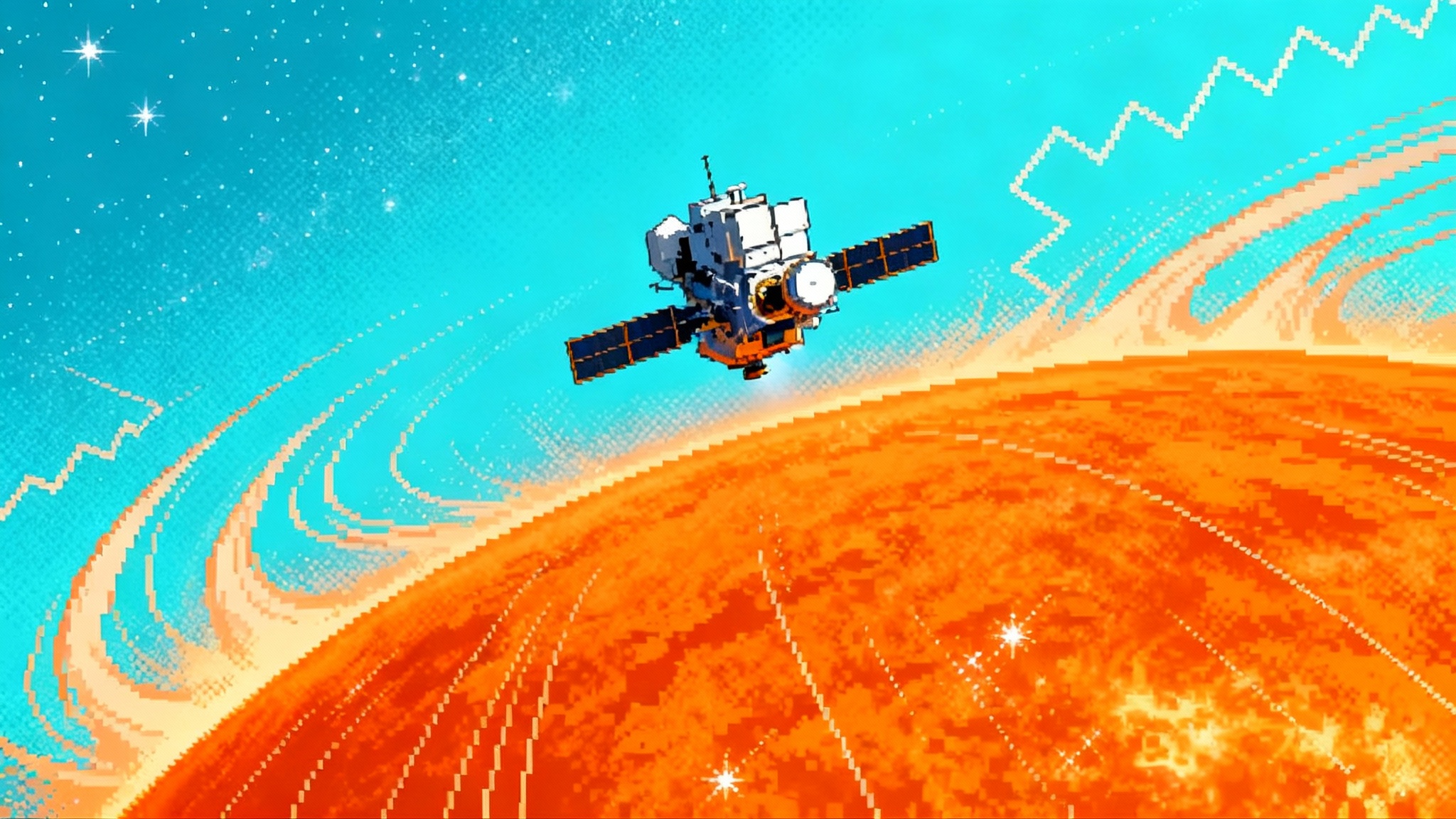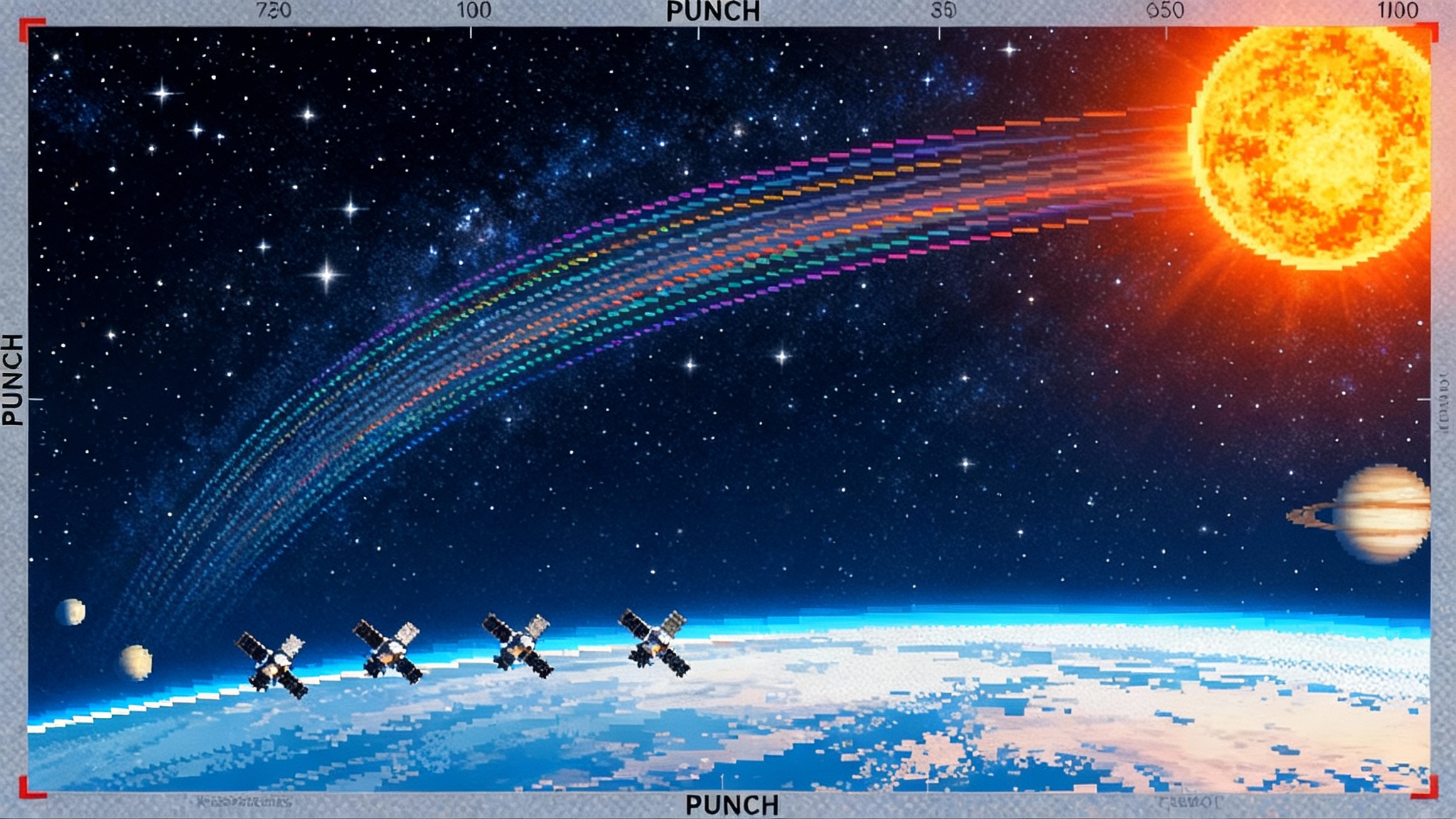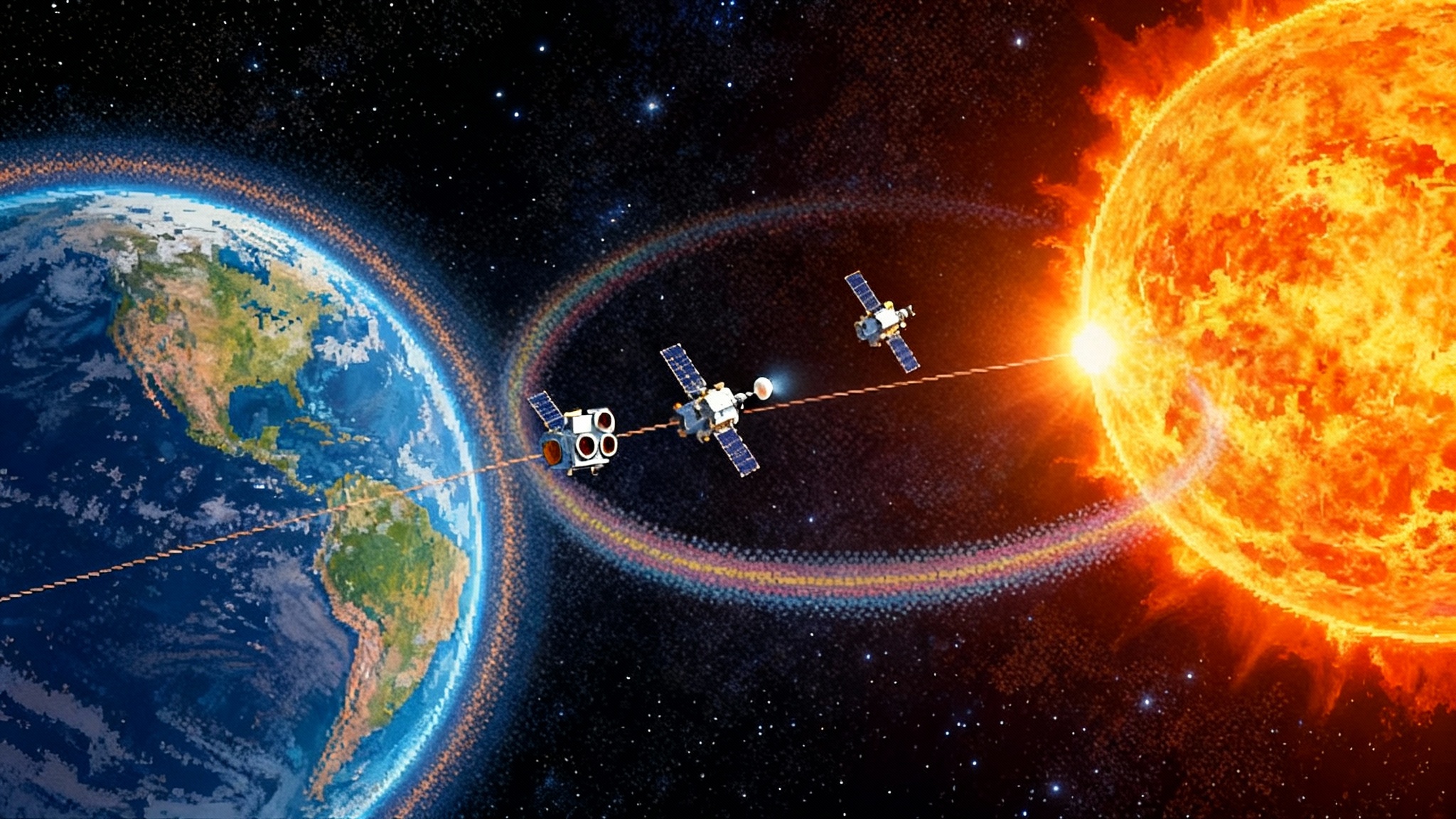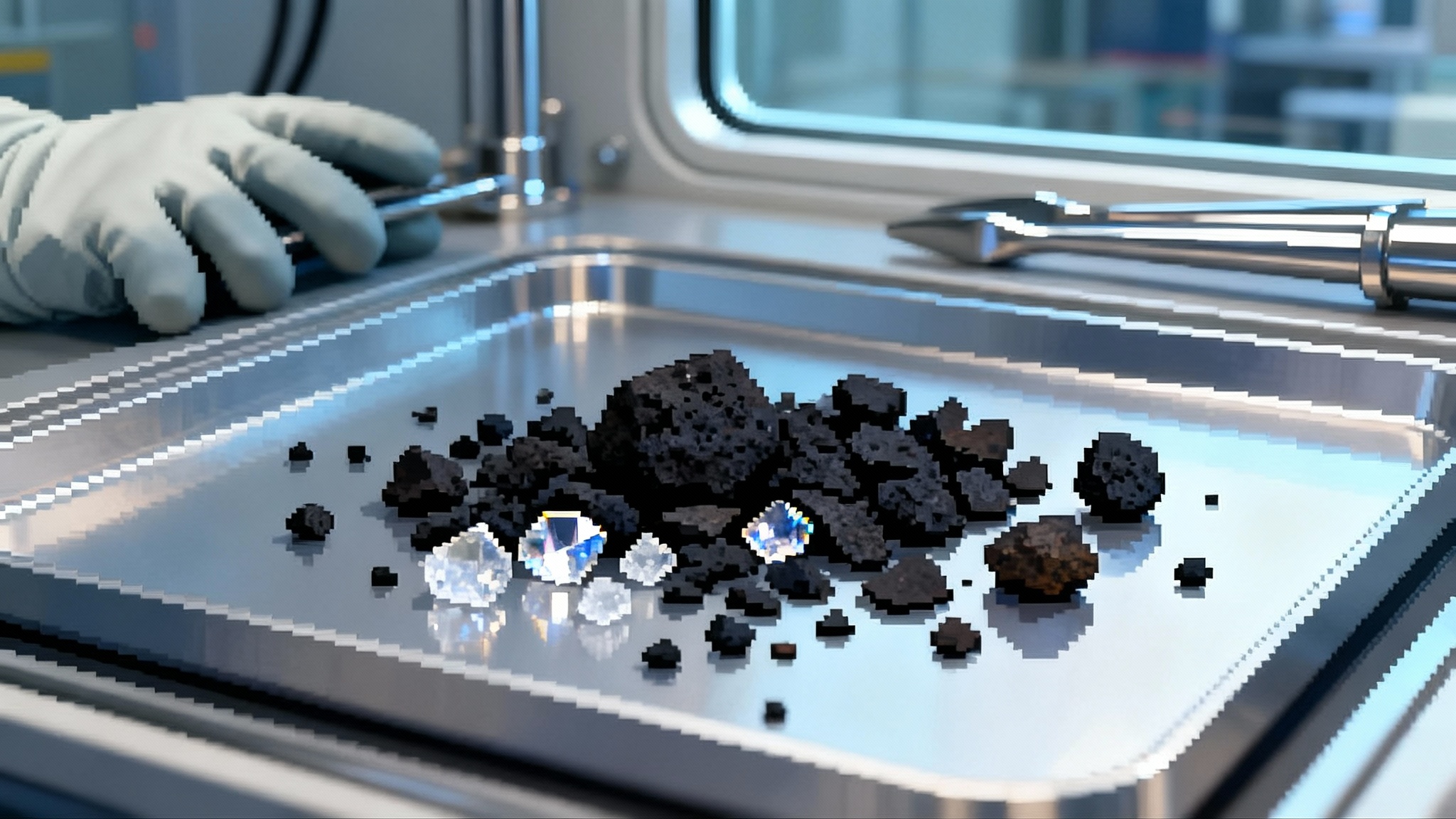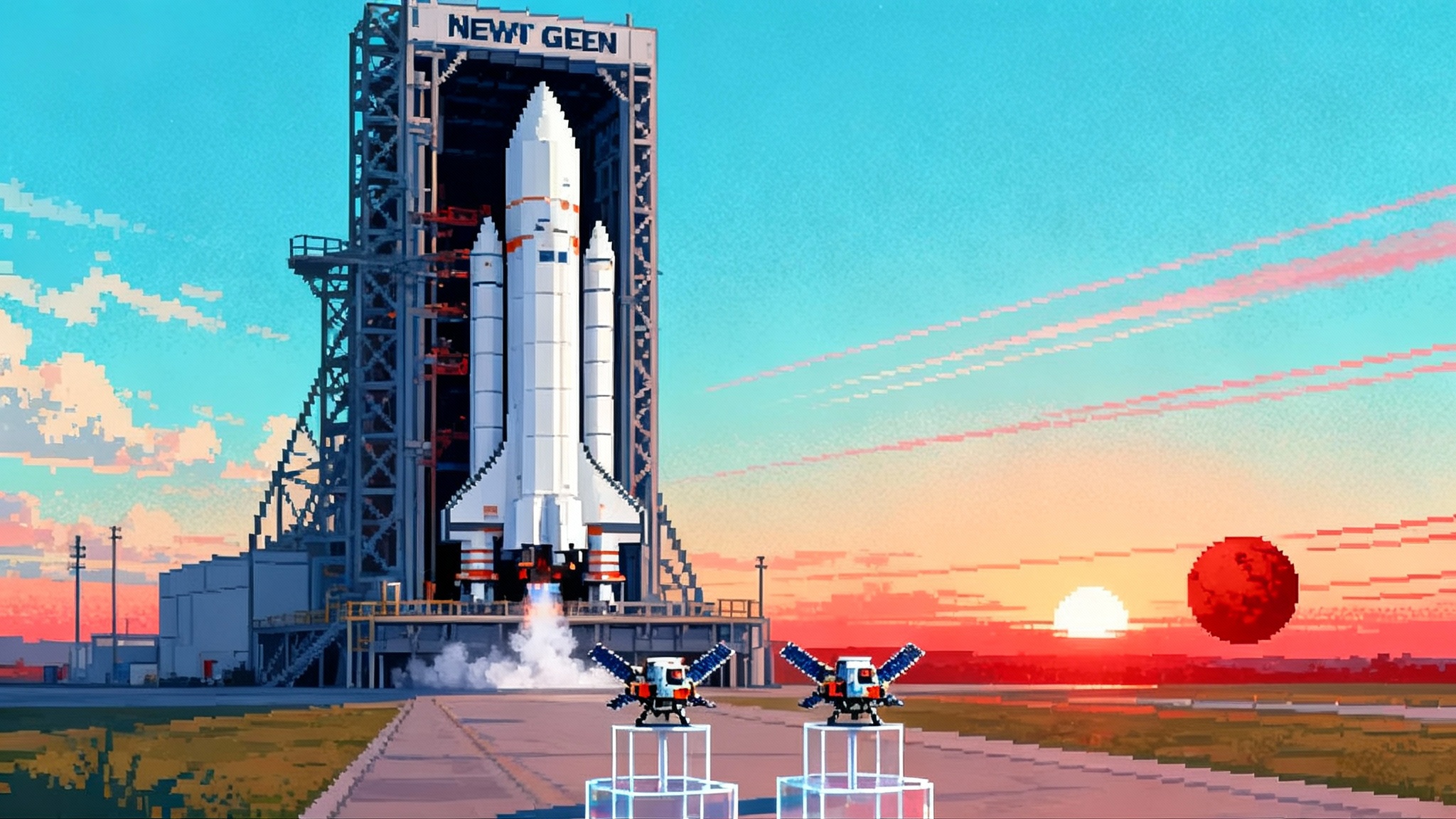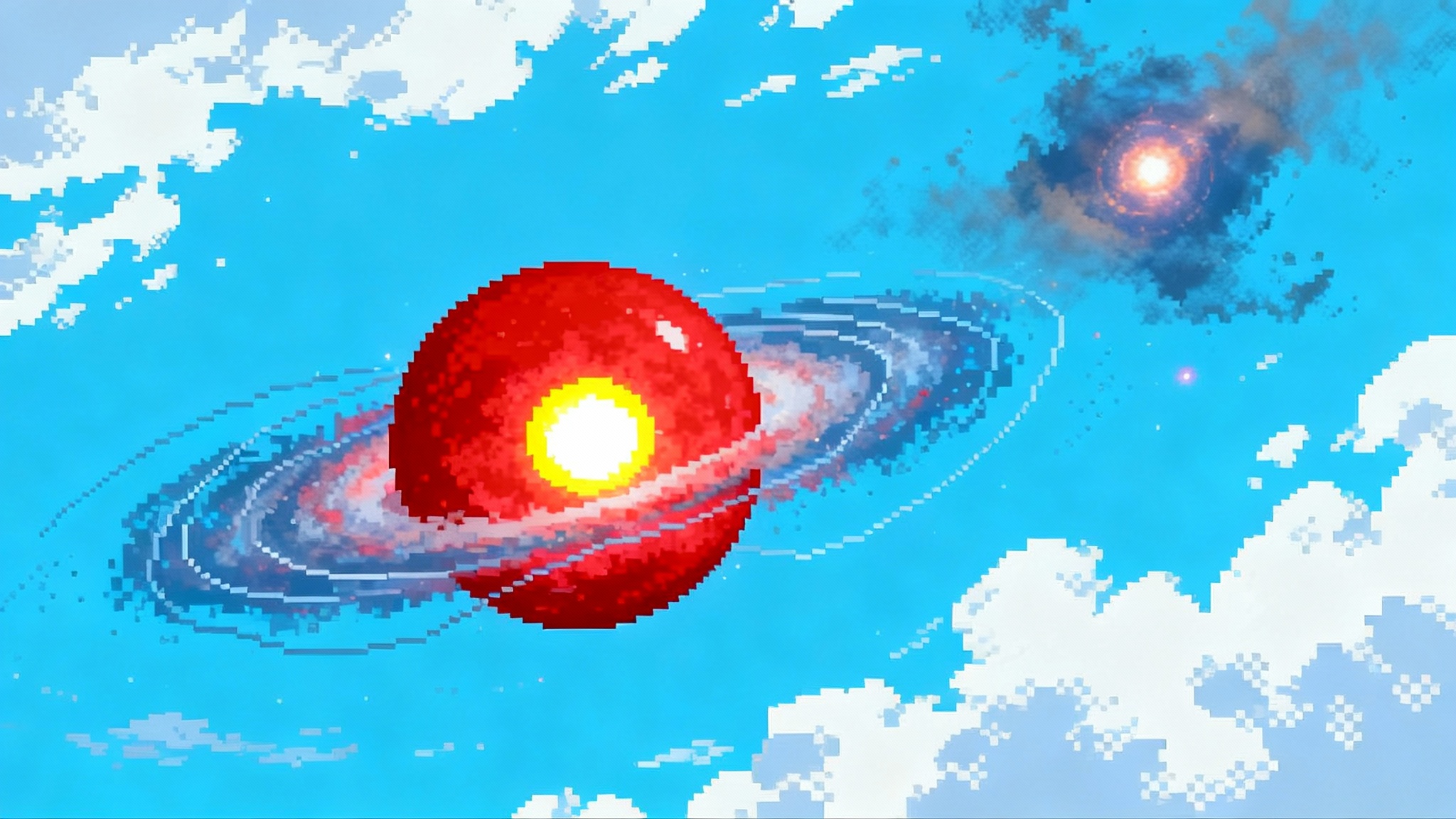Earth's new quasi-moon could reboot small-body missions
Meet 2025 PN7, a newly identified Earth co-orbital whose Earth-like path turns deep space into a short hop. With low relative speeds and short transfer times, it invites rapid rendezvous, affordable sampling and even year-scale returns as Rubin and NEO Surveyor expand the pipeline.

A tiny new neighbor with outsized potential
Earth has a fresh addition to its co-orbital entourage. Recent observations identify 2025 PN7 as a new quasi-satellite of Earth, an asteroid that loops the Sun in step with our planet and appears to hover nearby in a rotating frame of reference. The initial orbit solutions and dynamical modeling indicate PN7 may have occupied this state for decades and could remain for many years. You can read the core discovery summary in the brief research note meet Arjuna 2025 PN7. That alone is exciting science, but the real story is what this class of objects unlocks for flight dynamics and mission design: quasi-satellites are unusually easy places to go.
In other words, 2025 PN7 is not just news. It is an invitation. Because the orbits of quasi-satellites are so Earth-like, they ask for far less propellant and time than most near-Earth targets. That changes the trade space for everything from quick characterization flybys to month-scale sample return sprints. It also sets the stage for a new operational lane that intersects planetary defense, technology demonstration, and small-body science in a way that is practical and affordable.
Why quasi-satellites are ultra-accessible
You can think of quasi-satellites as co-orbital hitchhikers. They keep nearly the same average distance from the Sun as Earth, and their inclination and eccentricity are modest. In the rotating frame, they trace lazy ellipses around Earth, but they are not gravitationally bound like the Moon. That geometry matters for propulsion and timing.
- Relative velocities are low. Because their heliocentric speed and direction closely match Earth’s, the approach speed can be a few hundreds of meters per second instead of the kilometers per second common when chasing a typical Apollo-type near-Earth asteroid. Low closing speed is friendlier for navigation, autonomous proximity operations, and sampling.
- Plane changes are small. With inclinations of only a few degrees, the out-of-plane cost is modest compared with many near-Earth targets. That is a gift for small propulsion systems and missions flying on rideshares that do not control launch declination.
- Transfer times are short. Ballistic or gently propulsive transfers from high Earth orbits or Earth-Moon Lagrange staging points can reach co-orbital objects in weeks to a few months. That tight loop enables fast science cycles, rapid iteration on autonomy, and the possibility of first-contact to sample return in under a year for the most favorable cases.
- Return is easy. Because your spacecraft starts and ends near Earth’s orbital energy, you can design purely ballistic reentries for sample capsules or use modest retargeting burns to hit a recovery zone. The carrier vehicle can continue on to a second target or an extended technology demo.
The net effect is a mission architecture that can look more like high-energy cislunar logistics than deep-space exploration. That is revolutionary for cost and cadence.
A rapid rendezvous and sample return sketch
Picture an ESPA-class spacecraft launching as a rideshare to a high-energy drop-off. From there, a small chemical stage or a compact solar electric propulsion unit provides on the order of hundreds of meters per second to match phase with a quasi-satellite. The spacecraft performs optical navigation in cruise, then transitions to relative navigation for terminal approach. With a small closing speed, proximity operations can proceed with conservative keep-out zones and simple autonomous gates.
For sampling, there are options that scale well to a 100 to 300 kilogram bus:
- Touch-and-go with a short thruster pulse and a gas burst or coring head.
- Harpoon or microdrill anchoring for fast rotators or rubble piles.
- Electrostatic or adhesive sampling heads for regolith gleaning when surface cohesion is high.
A sample capsule can separate on a return arc that targets a terrestrial corridor, while the carrier bus remains in a co-orbital loop for extended imaging and in situ analysis or diverts to a secondary target. For context on why small, fast returns matter to science, compare with the cadence discussed in Bennu’s 2025 sample haul.
2025 PN7 versus Kamoʻoalewa
If quasi-satellites are the best new addresses in the near-Earth neighborhood, Kamoʻoalewa is the landmark on the block. Discovered in 2016, Kamoʻoalewa is tens of meters across and has drawn attention because its spectrum looks unusually lunar, hinting that it could be impact ejecta from our Moon. It is also the target of China’s Tianwen 2 sample return mission, whose mission profile includes both touch-and-go and anchor-and-drill sampling techniques before delivering grams of material to Earth.
So how does 2025 PN7 compare?
- Size and gravity. PN7 is small, on the order of tens of meters, which means microgravity and vanishing surface escape speeds. That eases anchoring loads but drives more careful plume and contact dynamics. Kamoʻoalewa, likely in the 40 to 100 meter range, offers a similar regime but with a bit more mass to work with.
- Orbit similarity. PN7’s orbit appears to be very Earth-like, with low inclination and low eccentricity. That pushes it toward the ultra-accessible end of the quasi-satellite spectrum. Kamoʻoalewa’s inclination is higher, and it transitions between quasi-satellite and horseshoe configurations over time, which is still accessible but a touch more demanding.
- Dynamical tenure. PN7 seems to be a short to mid term resident in the co-orbital resonance. That is an advantage for near term missions that can capitalize on the current geometry, but it also motivates quick action because the most favorable windows may not last indefinitely. Kamoʻoalewa is comparatively stable on human timescales, which is one reason it was selected as a flagship sample target.
- Surface unknowns. PN7 has no light curve, color, or radar model yet. That uncertainty is part of the appeal and also a risk driver. By contrast, Kamoʻoalewa has a constrained fast rotation period and a reflectance spectrum that suggests lunar-like silicates. Tianwen 2’s planned operations are built to handle a small, rapidly spinning, possibly blocky target. Those same techniques would likely transfer well to PN7.
The punchline is that PN7 is an even purer test case for the class: small, close, and quiet in terms of relative velocity. If you wanted to design a low-cost sample mission to demonstrate autonomy, sampling, and return logistics, this is exactly the kind of object you would pick.
What Tianwen 2 implies for future designs
Tianwen 2 is a watershed because it treats a quasi-satellite as a first-class sample return destination. The reference architecture carries two sampling modes, a conservative touch-and-go and a more assertive anchor-and-drill. It also separates the sample return function from the carrier bus so that the mission can drop off a capsule at Earth and continue on to a second body. There are several takeaways for anyone planning to chase PN7 or its successors.
- Dual-mode sampling is not overkill. Small bodies often rotate quickly, and surface mechanics vary. Redundancy in sampling mechanisms increases the chance of success without a huge mass penalty.
- Autonomy and guardrails matter more than brute force. Slow approaches, simple approach cones, and robust off-nominal handling reduce risk when the gravity well offers no cushion. Invest in optical navigation and terrain-relative navigation that has been exercised in hardware-in-the-loop.
- Keep the return capsule simple. A ballistic reentry with a reliable heat shield and parachute recovery can be a low-complexity way to close the loop. The bus can then exploit its remaining propellant for extended operations, which multiplies science per launch. For a program-level comparison of tradeoffs, see Mars sample return reset explained.
- Build for a fast window. Quasi-satellite opportunities can be seasonal and sometimes brief. Modularity, rideshare readiness, and a lean ground segment let you move quickly when geometry is favorable.
If you map these design choices onto PN7, you get a realistic 12 to 18 month concept from project start to Earth sample in hand, especially if you reuse flight-proven avionics and sampling hardware.
The delta-v math that makes this work
Delta-v is not a single number, and every trajectory trades differently depending on rideshare orbit, staging point, and time of year. Still, the trend line is clear. Compared to chasing a typical near-Earth asteroid with a few kilometers per second of rendezvous cost, a quasi-satellite with Earth-like elements can be matched with hundreds of meters per second after a rideshare drop-off. Add margins for terminal operations, detumble or station keeping, and return targeting, and you still land well inside a budget that small propulsion systems can deliver.
Two additional notes matter for the engineering team:
- Solar electric propulsion widens windows. Even a few tenths of a newton at high specific impulse lets you fine tune phasing and arrive gently without precise launch timing.
- Lagrange staging pays off. If you can stage from an Earth-Moon L1 or L2 depot or halo orbit, you reduce gravitational losses and gain clearer lines for deep-space navigation and communications. For background on the value of L1 staging, see the mission context in IMAP at L1 outlook.
This is why PN7 and its cousins are not just scientifically tempting. They are operationally forgiving.
How Rubin and NEO Surveyor unlock a new lane
Discovery used to be the bottleneck. Quasi-satellites are faint, their visibility windows are awkward, and they can masquerade as mundane near-Earth objects until you integrate enough tracklets to see the resonance. That is changing fast.
- Rubin Observatory. As the survey ramps up, Rubin’s wide-fast-deep cadence and enormous camera will pour detections into the Minor Planet Center with repeat coverage that accelerates orbit refinement. The survey’s ability to flag Earth-like semimajor axes and low inclinations should push more quasi-satellites into the pipeline earlier.
- NEO Surveyor. NASA’s dedicated infrared space telescope is designed to find the dark and difficult objects that often slip past optical surveys. Its mid-infrared sensitivity will improve completeness for low-albedo bodies and for objects hiding in sunward sky. For the official mission overview, see NASA’s Near-Earth Object Surveyor overview.
Together, Rubin and NEO Surveyor do more than build a longer list. They open a new operating concept.
- Early warning of favorable geometry. With better ephemerides and thermal size estimates, teams can flag low delta-v windows well in advance and preposition rideshare-friendly missions.
- Rapid follow up. Once a candidate looks promising, a concerted campaign can bring together Rubin tracklets, targeted ground-based photometry for spin state, and radar ranging from facilities like Goldstone when geometry allows. That gives flight teams a real shape model, not a guess.
- A quality filter for planetary defense. Quasi-satellites are not good impact risks in their quasi-satellite phase, but they are close and cooperative testbeds. You can rehearse rendezvous, momentum transfer, and regolith interaction techniques on natural targets with low relative speed. Those lessons scale to harder cases.
Quasi-moon ops as a planetary defense and science lane
If you set out to create a practical proving ground for asteroid operations, you would want three things: easy access, frequent opportunities, and science that justifies the trips. Quasi-satellites check all three boxes.
- Technology readiness on real rocks. Touch-and-go sampling, micro-anchoring, autonomous guidance, and dust plume modeling can all be iterated in short mission cycles. That makes future flagship missions safer and cheaper.
- Materials that matter. If some quasi-satellites are lunar ejecta or are covered in space-weathered material unlike typical near-Earth asteroids, they carry clues about the Earth-Moon system and the inner solar system’s collisional history. A shelf of small samples from multiple quasi-satellites would be disproportionately valuable.
- A rehearsal stage for deflection. Kinetic impactor tests, gravity tractor station keeping, and surface interaction physics can all be exercised on targets that are convenient and well monitored. You would not conduct hazardous experiments, but you could calibrate models, validate sensors, and build muscle memory.
- A new tempo for small missions. When a complete rendezvous and return fits inside a single budget line and a single graduate student cohort, the community can run more experiments and take more smart risks.
What to watch next
- Orbit confirmation and refinement for 2025 PN7. As more observations come in, PN7’s orbital elements and resonance tenure will sharpen. That will clarify the timeline for the best launch windows.
- First light science from Rubin. Expect a torrent of new small bodies with improved orbit quality as the survey transitions fully into operations. That directly feeds quasi-satellite discovery and tracking.
- NEO Surveyor integration milestones. As hardware progresses toward launch, teams planning quasi-satellite missions can build pipelines that ingest NEO Surveyor data products on day one.
- Tianwen 2 operations planning. Every image and maneuver from that campaign will teach something about operating around a small, fast target. Sampling outcomes will inform designs for PN7 and its successors.
The bottom line
Quasi-satellites invert the usual logic of deep space. They are hard to find but easy to reach. With 2025 PN7 now on the board, flight teams can start sketching rapid rendezvous and sample return missions that fit on small buses and small budgets. Rubin and NEO Surveyor will turn today’s chance discovery into a pipeline, and Tianwen 2 is already writing the operations playbook. That is how a tiny rock near Earth can reboot the way we explore and defend our planet.
